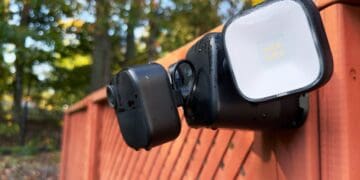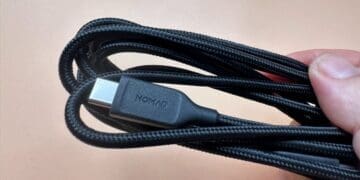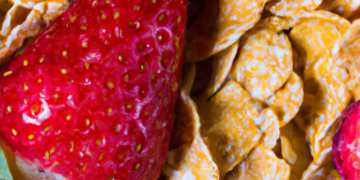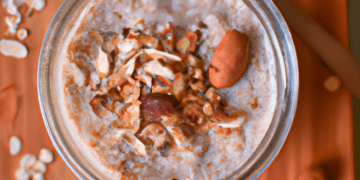It’s Wednesday, which means it’s time for us to visit the bump on Hump Day and discuss starting pitcher news. Each week in this article, I’ll be taking a deeper look at a few trending/surging starting pitchers to see what, if anything, is changing and whether or not we should be investing in this hot stretch.
The article will be similar to the series I ran for a few years called Mixing It Up (previously Pitchers With New Pitches and Should We Care?), where I broke down new pitches to see if there were truly meaningful additions that changed a pitcher’s outlook. Only now, I won’t just look at new pitches, I can also cover velocity bumps, new usage patterns, or new roles. However, the premise will remain the same: trying to see if the recent results we’re seeing are connected to any meaningful changes that make them worth buying into or if they’re just mirages.
Advertisement
Each week, I’ll try and cover at least four starters and give my clear take on whether I would add them, trade for them, or invest fully in their success. Hopefully you’ll find it useful, so let’s get started.
Most of the charts you see below are courtesy of Kyle Bland over at Pitcher List. He created a great spring training app (which he’s now carried over into the regular season) that tracks changes in velocity, usage, and pitch movement. It also has a great strike zone plot feature, which allows you to see how the whole arsenal plays together.
MLB: Atlanta Braves at San Diego Padres
2025 Fantasy Baseball Rankings: Bobby Witt Jr., Shohei Ohtani, Aaron Judge lead Top 300 rest of season ranks
Advertisement
Kyren Paris and Nick Kurtz make their rankings debuts.
Edward Cabrera – Miami Marlins (Four-Seam Fastball Usage, New Curve)
Am I really going to do this again? Every year, I talk myself into Edward Cabrera, repeating in my head, “If he can just throw strikes with the fastball, we’ll be OK.” It’s the same logic that led me to Jose Soriano in many drafts, and that’s worked swimmingly so far, so why not Cabrera? Maybe 2025 is the year?
Cabrera made his season debut last week after missing the beginning of the season with a blister that landed him on the IL. However, that blister may have been a blessing in disguise. Cabrera struggled during spring training, and the time on the injured list allowed him to take a break and continue to throw bullpens without the pressure of a game situation. That’s important because when we saw Cabrera pitch against the Nationals last week, we saw a different version of the 27-year-old. Perhaps he just needed more time to continue to implement the changes that the new coaching staff was working with him on. After all, this is a Marlins staff with a new manager, a new pitching coach, a new assistant pitching coach, and a new performance and data integration strategist, which means plenty of changes in the philosophy of the pitching staff.
Advertisement
So, what did we see from Cabrera that was different?
Edward Cabrera chart
For starters, Cabrera has shifted his attack plan pretty dramatically. It was only one start, but he cut his four-seam usage more than in half and led with his breaking balls, particularly leaning into his slider far more than he did in 2024. On the surface, I like those changes because the biggest issue we had with Cabrera was that his four-seam fastball command was poor. He had below-average zone rates on it, and when he did get it in the zone, it was mainly down the middle with almost a 10% mistake rate and nearly 50% Ideal Contact Rate (ICR), which is a Pitcher List stat that measures barrels and solid contact and hard groundballs allowed.
The four-seamer has consistently graded out as Cabrera’s worst pitch, so throwing it less is something we should be happy about. Provided he can get strikes with his other pitches.
Advertisement
Interestingly, that early strike pitch, particularly for right-handed hitters, turned out to be his slider. Cabrera tightened up his slider this season, keeping the same velocity and vertical movement but dialing back the horizontal break. That could be a one-game small sample size, or it could be a concerted effort to make it a pitch he can command in the zone. In his season debut, Cabrera used the pitch early in the count 75% of the time to righties, and it had a 75% first-pitch strike rate. Overall, the pitch had an above-average 50% zone rate and 69% strike rate, so the one-game sample seems to suggest that it is a pitch he can command and is a pitch he feels confident in throwing for strikes.
He also has the sinker, which he can command in the zone better than his four-seamer, so he has two pitches now to righties that he can use to pound the zone early and get ahead in the count without relying on his four-seam fastball. That sinker is going to be less useful to lefties, and the new usage of the slider means it’s not missing many bats, but that’s where the other new wrinkle comes in.
Cabrera drastically changed his curveball in the offseason.
In his first start, his new curveball was one mph slower than the one he threw last year but featured nearly double the amount of vertical and horizontal break. He went from eight inches of horizontal break and just over seven inches of vertical break on an 85 mph curve to over 11″ of horizontal break and 14″ of vertical break. It’s a wild change. Yet, it was an incredibly impactful one in that first start, getting three whiffs and a 35.3% CSW.
Advertisement
We can also see a usage plan shaping up here. Against lefties, he threw the curveball in the zone at almost double the rate he did against righties, and he kept it in the lower third of the strike zone 64% of the time to lefties while doing so 83% of the time to righties. To me, that suggests the curve could be his early-strike breaking ball to lefties and more of a swing-and-miss pitch to righties; yet, it missed bats to hitters of both handedness in the first start.
Using the curve and sporadic four-seam fastball to get ahead of lefties sets up his elite changeup, which he leaned into far more in his first start. The usage rate was 29.1% overall, but 42% against lefties after being 32% last year.
Cabrera has never thrown over 100 innings in an MLB season, and the Marlins are not a great team, which will hurt his potential win totals, but I’m loving these changes for him. Who knows if they’ll last into the next few starts, but if this is the version of Edward Cabrera that we get in 2025, I’ll have to do a lot fewer mental gymnastics to talk myself into rostering him.
Ben Brown – Chicago Cubs (No New Changes)
I wanted to talk about Ben Brown quickly because I know there is a lot of buzz around him after his start against the Dodgers, where he went six shutout innings and allowed five hits while walking five and striking out five. I hate to be here to pour cold water on that performance, but it’s what I have to do.
Advertisement
First of all, on the season, Brown has a 5.09 ERA, with 22 hits and a 20:9 K:BB ratio in 17.2 innings, which gives him a 10.7% walk rate to go along with a 23.8% strikeout rate. His 12.9% swinging strike rate (SwStr%) is above average, but he’s also giving up a lot of hard contact, so the case for Brown is simply: he pitched well against the Dodgers, he has a good curveball, and he’s locked into a rotation spot.
After seeing how he did what he did against the Dodgers, that’s not just enough for me.
Ben Brown versus dodgers
For starters, Brown ended the illusion that he throws three pitches by not throwing the changeup at all against the Dodgers. He’s only thrown eight changeups in three starts, and while it might be a pitch he feels confident in using down the stretch, it’s simply not there right now.
Advertisement
The main driving factor behind his success against the Dodgers was his ability to fill up the zone for strikes. He had his highest zone rate and strike rate of the season, and while that’s generally a good thing, it’s not enough in and of itself. In that start against the Dodgers, Brown threw the four-seam fastball more often, but threw it in the middle of the zone more often. In fact, he threw 14.3% of his fastballs middle-middle. The MLB average for four-seam fastballs thrown middle-middle last year was 7.4%. So Brown essentially threw double the percentage of middle-middle fastballs that a starting pitcher typically did last year and did it against the best team in baseball. I know it worked, but that, uh, doesn’t seem like a great strategy long-term.
He also had just a 5.4% SwStr% on his four-seam fastball against the Dodgers. So he was throwing middle-middle fastballs, and they weren’t missing bats. The Dodgers had a 90% zone contact rate on his fastball with a .333 average and a 50% ICR. None of that is good. What is good is that he located his curveball well against them, with a much higher zone rate and strike rate than he’s had in any other start this season. It has just a 10.7% SwStr%, but it didn’t give up much hard contact and earned six called strikes.
So, to wrap that up, Brown succeeded by only throwing two pitches, throwing his fastball over the middle of the plate far more often, and missing fewer bats but getting more outs in play. All while featuring a below-average fastball and a good curveball. That’s just not enough for me. I know he’s likely going to be in the starting rotation for a while with Justin Steele out for the year, but I can’t trust a two-pitch pitcher with one good pitch. I know it might seem weird to say that after what he just did against the Dodgers, but I think that statline is entirely misleading. Also, Javier Assad is starting a rehab assignment, so don’t be surprised if Brown loses his rotation spot if he struggles in his next few starts.
Shane Smith – White Sox (New Sinker, Changeup success)
Another pitcher who may have “gotten away with it” in his last start was Shane Smith. However, Smith has also allowed just four earned runs on nine hits in 17.2 innings this season, so it’s probably time we look into how he’s doing what he’s doing.
Advertisement
Smith leads off his arsenal with a four-seam fastball that averages 94.4 mph and is used to both righties and lefties. Through three starts, it’s far more effective to lefties, as righties post a 60% ICR against it and Smith does a far worse job getting it inside (more on that later). He also throws a lot of fastballs down the middle to both hitters, with a 12.5% middle-middle rate to righties and a nearly 19% mark to lefties. That supports what I saw about the Red Sox, with the Boston hitters simply getting under plenty of fastballs that were over the heart of the plate. Smith doesn’t have great shape or elite velocity on his fastball, so I don’t love his attack plan or reliance on that pitch so much.
However, he also leans heavily on a slider to righties and a change-up to lefties. On the season, he has only used the changeup 9.5% of the time to righties and only used the slider 10% of the time to lefties, so these are pretty much matchup pitches to hitters of a certain handedness. Not that that’s a bad thing. The slider is not giving up any hard contact to righties, and he throws it in the zone often, but it doesn’t miss many bats with just a 10.5% SwStr% to righties this season. Meanwhile, the changeup has been a strong pitch to lefties, but weirdly is giving up a lot of hard contact and doesn’t miss as many bats as I think it should with its movement profile.
Part of that could simply be that he uses it mainly early in the count to lefties, so he wants it in the zone for groundouts rather than out of the zone for swinging strikes, but I think that movement profile at 92 mph is a pitch that he can use more as a two-strike pitch and more often against righties as well. If he keeps it low in the zone, it could easily operate like a splitfinger and miss plenty of bats, which is kind of what he needs against righties because the slider isn’t that pitch and his curve is seldom used and also doesn’t miss bats.
Advertisement
The last piece of the puzzle is a new pitch we saw against the Red Sox: the sinker. Smith threw four sinkers in that outing, which is intriguing because, as I said above, his four-seam fastball gets hit hard by righties. Yet, the four-seam does have a well-above-average swinging strike rate to righties, so if he can use another fastball for strikes to righties and then get chases up and out of the zone with the four-seamer, that could be the missing piece to right-handed hitters. Using the sinker inside to righties, which he doesn’t do enough with his four-seam fastball, could also set up the slider low and away, so I kind of dig this new addition if he can lean into it more.
At the end of the day, I think Smith is an intriguing pitcher with one truly elite pitch and a collection of other offerings that could easily set him up for success. His overall location needs to improve, and the sinker needs to bring more swing-and-miss to righties, but this is a Rule 5 pick who the Brewers moved from the bullpen to the rotation just last year. There will be some growing pains, but it wouldn’t shock me if Smith became a far more dynamic pitcher in the second half of this season.
nbcs_edgefantasy_JassonDominguezCTB_210604.jpg
2025 Fantasy Baseball: 60 Undervalued Players, from Jasson Domínguez to Bo Bichette
Advertisement
60 undervalued players to help you win your fantasy league.
Yusei Kikuchi – Los Angeles Angels (New Arm Slot, Slider Shape)
Yusei Kikuchi seemed to unlock a new level in the second half of 2024, pitching to a 3.49 ERA, 1.05 WHIP, and 31% strikeout rate in 69.2 innings with the Astros. A huge component of that was him leaning into his slider more, throwing it 31% of the time in the second half after using it just 17% of the time in the first half. The slider posted a nearly 16% swinging strike rate in the second half of the season and allowed him to put his less reliable curveball on the back burner.
It seemed like an easy plan for him to replicate in 2025, but when he signed with the Angels, I worried that he was with an organization that couldn’t stay out of its own way with pitcher development and would either change him for the worse or not be able to identify why Kickuhi was going through a tough stretch, as he has been proned to do in his MLB career. Perhaps both of those are true so far.
Advertisement
Through his first three appearances, Kikcuhi is off to a disappointing start, allowing 10 earned runs on 15 hits in 18 innings while striking out 16 and walking eight. The 5.00 ERA and 21.6% strikeout rate are far worse than anything we’ve seen from him in years, so I wanted to dig in to see if anything was different. And…it’s not good news.
Yusei Kikuchi chart
This chart from Alex Chamberlain’s Pitch Leaderboard shows a few things that stand out to me.
For starters, Kikuchi has dropped his arm angle significantly. The lower the arm angle, the more sidearm the release, so Kikuchi has dropped his arm angle almost 10 degrees, which has led to an overall shift in the movement profile of his pitches, as you can see above. He has lost some of his vertical attack angles and movement in favor of horizontal movement, especially on both his four-seamer and slider. Now, much of that could simply be a result of releasing his pitches from a lower arm angle, but why he lowered his arm angle in the first place is the question. A 10-degree difference is not just a small sample size difference, so this has to be a conscious change, but was it his decision or the Angels?
Advertisement
Overall, he’s not allowing as much hard contact, with a strong 32% Ideal Contact Rate, but his SwStr% is the lowest it’s been since 2019, and his strike rate is at a career low mark, which could also be why he has a nearly 11% walk rate. Additionally, he’s getting fewer chases out of the zone than he ever has since coming over from Japan. Maybe he’s struggling to adjust to the new arm angle or the new action on his pitches, but they’re not missing bats and not being commanded for strikes, which is a major problem.
However, my biggest concern is that the slider has a new movement profile and has also been performing poorly. This year, he is throwing his slider nearly two mph slower and has more than doubled the vertical break to 4.3 inches. The pitch is in the strike zone more often than last year and getting more called strikes, but it has just a 7.7% SwStr% and a well below-average PutAway Rate, which measures how often a pitch thrown in a two-strike count leads to a strikeout. He has also only thrown the slider in two-strike counts 19% of the time this year, after using it 39% of the time in two-strike counts last year.
So, in summary, Kikuchi has changed the shape of his slider, which was the pitch that drove his success last year. He has made it more hittable and started to use it more often early in the count for called strikes and stopped using it late in the count for swings and misses. He has also added a sweeper, which feels entirely unnecessary and may also be the reason why he wants more vertical movement on his slider.
At the end of the day, I’m not sure who suggested these changes, but I don’t like them, and they give me real pause about rostering Kikcuhi in most formats right now.
Advertisement
WEDNESDAY MORNING ADDENDUM:
Oh, would you look at that. Yusei Kikuchi had a solid start on Tuesday night against the Rangers and did it by leading with his slider 47% of the time. He also didn’t have the same drop on his slider, posting a vertical movement profile much closer to what we saw last year. Perhaps those first three starts were just a “figuring it out” process for Kikuchi with this new arm angle. I still don’t love the change, and I remain a bit skeptical.
Support authors and subscribe to content
This is premium stuff. Subscribe to read the entire article.















































































